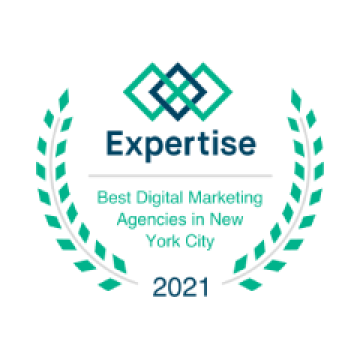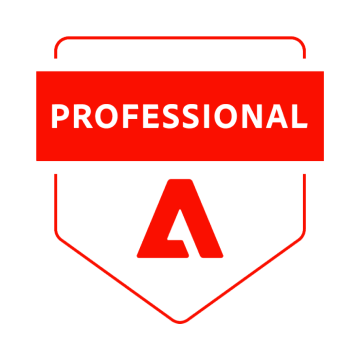Tracking maps to the motions that matter: RFQ start, RFQ submit, spec download, prequal request, project inquiry. Dashboards show which pages and case studies drive bid invites, what channels create the most qualified demand, and where to focus the next quarter’s budget.
Construction Web Design Services
We design and build B2B websites that help energy and infrastructure leaders capture qualified RFQs, showcase complex capabilities, and move opportunities from first visit to deal review without extra back-and-forth. Our construction website development connects your public site with the systems you already use – CRM, ERP (SAP/Oracle), Procore/Autodesk, job boards – so content, forms, and data flow cleanly across teams.

Our Offerings
Discovery, Stakeholders & Information Architecture
UX & UI Design for Industrial Buyers
CMS & Headless Development (WordPress, Drupal, Next.js)
Integrations: CRM/ERP/Procore/Autodesk Build
RFQ/RFP Flows & Conversion
Project Portfolio, Spec & Document Libraries
Technical SEO & Location Coverage
Discovery, Stakeholders & Information Architecture
We start with interviews across business development, operations, safety, and IT to map real buying paths: from spec review to prequalification to RFQ. Then we translate that input into a site architecture that surfaces proof early – licensing, safety records, markets served, and relevant past projects. Content types and relationships are defined up front (projects, services, geographies, equipment, certifications) so the CMS reflects how your teams actually work.
UX & UI Design for Industrial Buyers
Drawings, certifications, and scope detail are easier to consume when the interface fits the job. We design layouts that highlight capabilities, capacity, and risk controls without burying visitors in jargon. Search, filters, and comparison views help EPC partners and owners jump from a broad capability page to a short list of relevant projects in a few clicks.
CMS & Headless Development (WordPress, Drupal, Next.js)
We implement a CMS that your team can maintain without developer hand-holding. For multi-brand or multi-region setups, headless frameworks let you publish to web, partner portals, and kiosks from a single content model. Editing is guarded by roles, approval flows, and reusable blocks so marketing can update portfolios and location pages while legal and safety teams keep control of sensitive content.
Integrations: CRM/ERP/Procore/Autodesk Build
Leads and RFQs shouldn’t sit in inboxes. Forms feed Salesforce, Dynamics, or HubSpot with the metadata sales needs—trade, project size, location, time frame. We connect vendor lists, prequal forms, and document requests to your ERP or project tools (Procore, Autodesk Build) so files and contacts stay in sync and internal teams avoid duplicate entry.
RFQ/RFP Flows & Conversion
We design gated downloads, bid request paths, and multi-step RFQ forms with conditional logic to collect specs without scaring off qualified buyers. File uploads, NDAs, and permissioned resources can be part of the same flow. Routing rules send the request to the right estimator by region or line of business, while auto-acknowledgements set clear next steps.
Project Portfolio, Spec & Document Libraries
A strong portfolio is more than a gallery. We build structured libraries with filters for market, discipline, contract type, HSE metrics, and equipment used. Specs, cut sheets, and method statements live alongside each project so procurement teams can verify fit quickly.
Technical SEO & Location Coverage
We address technical SEO from the start—clean URL patterns, schema markup for Organization, LocalBusiness, and Project, XML sitemaps, and Core Web Vitals. For companies with multiple offices, we set up location pages that balance local search visibility with corporate brand consistency. Editorial guidelines help teams publish case studies and news without creating duplicate or thin content.
How We Bring Value To Your Business
Here’s how the website contributes to revenue, bid velocity, and internal handoffs.
1
More qualified RFQs with less back-and-forth
Information architecture mirrors real buying paths. RFQ forms use conditional logic, file uploads, and NDA gates so buyers can share scope, specs, and timelines in one pass. Requests route by region or service line to the right estimator, with auto-acknowledgments that set clear next steps.
2
Stronger proof for procurement & EPC partners
Portfolios are structured, not decorative. Projects carry markets, contract type, HSE stats, certifications, equipment lists, and method statements. Filters and comparison views help partners validate fit faster and move to shortlists without extra emails.
3
Clean handoff from marketing to sales & estimating
Leads sync to Salesforce, Dynamics, or HubSpot with account fields your team actually uses – trade, project size, location, procurement stage. Connections to Procore or Autodesk keep contacts and documents aligned, cut duplicate entry, and preserve attribution through the pipeline.
4
Field-ready performance and accessibility
Pages load fast on weak networks, documents use modern formats, and asset caching keeps brochures and cut sheets handy on mobile. Clear contrast, keyboard navigation, and form patterns make tasks easy for all roles, from jobsite supervisors to procurement teams.
5
Local visibility across regions and service lines
Location pages, service-area schema, and project tagging by geography help the right opportunities find you. Editorial guardrails prevent duplicate content across offices while keeping brand and legal requirements intact – useful for multi-state construction and energy work.
6
Decision-grade analytics for growth planning
Challenges We Commonly Solve
These are the blockers we address so your site supports bids, partner vetting, and internal handoffs without friction.
Fix the biggest blockers first.
Why Choose WiserBrand
We focus on the part of web design that moves bids forward: connecting your site to core systems, proving capability fast, and giving leaders reliable data to plan growth.
1
Connected to your stack
We integrate the website with Salesforce, Dynamics, or HubSpot and tie forms, RFQs, and document requests to the fields your sales and estimating teams use. Files sync to Procore or Autodesk Build, routing rules match regions and service lines, and approvals fit your internal governance so marketing can publish while legal and safety keep oversight.
2
Built for RFQs and project proof
Interfaces are designed around how procurement vets suppliers: structured project libraries, spec and method-statement access, and multi-step RFQ flows with conditional questions and file uploads. The result is fewer emails to clarify scope and faster movement from first visit to shortlist—useful for energy and construction bids that span multiple disciplines.
3
Reporting that matches your pipeline
Tracking mirrors business motions – RFQ start/submit, spec download, prequalification request, project inquiry. We implement GA4 and dashboards that attribute qualified demand to pages and channels, connect opportunity stages back to content, and surface what deserves next quarter’s budget.
Cooperation Models
Pick the engagement model that fits your roadmap and internal capacity – project launch, ongoing growth, or an embedded team that works beside IT and marketing.
Fixed-Scope Website Launch
Best when the requirements are clear: redesign or greenfield build, content model, integrations, and go-live window. We agree on a statement of work with milestones across discovery, UX/UI, development, content migration, QA, and launch. Payments track delivery stages, and change requests are handled through a light approval process so timelines stay predictable. This model suits RFP-driven timelines and executive sign-off cycles.
Ongoing Growth Program
For teams that need continuous improvements after launch: new service or region pages, portfolio expansions, CRO experiments, performance work, and SEO. We run monthly sprints with a rolling backlog, set quarterly goals tied to RFQs and prequalification requests, and report on channel and page performance in GA4/Looker Studio. Leadership sees what shipped, what moved the needle, and what’s next.
Embedded Delivery Team
A dedicated cross-functional squad (PM, UX, front-end, back-end, SEO/analytics) integrates with your tools and ceremonies. The shared backlog can cover site work plus related initiatives like partner portals, document libraries, or integrations with CRM/ERP/Procore/Autodesk. Capacity scales up or down with bid windows and capital planning cycles, while governance remains simple: one roadmap, clear ownership, and agreed response times.
Our Experts Team Up With Major Players
Partnering with forward-thinking companies, we deliver digital solutions that empower businesses to reach new heights.
Our Approach
From kickoff to handover, we follow a predictable process that reduces rework and keeps IT, marketing, sales, and estimating aligned.
01
Discover & Align
We interview stakeholders across business development, operations, safety, and IT to capture real buying paths and approval gates. The current site, analytics, and content inventory are audited; RFQ intake and prequal steps are mapped; and the tech stack is documented (CRM/ERP, Procore/Autodesk, marketing tools). We define success metrics, surface risks and assumptions, and agree on governance for content and legal review.
02
Architecture & UX
Information architecture is drafted around how procurement and partners vet suppliers. We define the content model (projects, services, geographies, certifications, equipment) and produce wireframes for the critical paths—capabilities, markets, portfolio, location pages, and RFQ. Interactive prototypes validate flow, while content guidelines specify what proof belongs on each page type (HSE data, contract type, scope, method statements).
03
Build & Integrate
We implement the chosen stack (WordPress/Drupal or headless with Next.js) with a component library for consistent UI. RFQ forms use conditional logic, file uploads, and optional NDA gates. Integrations push structured leads into Salesforce, Dynamics, or HubSpot and sync documents or contacts with Procore/Autodesk. Technical SEO foundations are set early: clean URL patterns, schema for Organization/LocalBusiness/Project, sitemaps, and a performance budget to keep pages responsive.
04
Content, QA & Readiness
Content is migrated with redirects to preserve equity. Project pages receive structured fields and media; location and service pages get unique copy to avoid duplication across regions. We run cross-browser and device testing, field-style network checks, accessibility reviews against WCAG 2.2 AA, and end-to-end tests for RFQ flows. Basic security hygiene is applied: role-based permissions, dependency updates, backups, and staging for safe releases.
05
Launch & Ongoing Optimization
Go-live follows a staged rollout with monitoring for errors and form throughput. Editors receive hands-on CMS training. GA4 and agreed events (RFQ start/submit, spec download, prequal request) feed dashboards for leadership. We set a 90-day optimization plan covering new location pages, portfolio expansions, CRO experiments, and performance improvements, prioritized by impact on bid volume and partner shortlists.
Case Studies
Our case studies highlight the outcomes we’ve delivered and the approaches that made them possible.
Construction Web Design Services FAQ
Which platform do you recommend for an industrial/B2B site?
It depends on your editing needs and integrations. WordPress fits marketing-led teams that want quick updates; Drupal works well when permissions and complex content types matter; a Next.js headless setup suits multi-brand or multi-channel publishing. We migrate content and train editors in any case.
Can you connect the website to our CRM and project tools?
Yes – forms and RFQ flows push structured data to Salesforce, Dynamics, or HubSpot, and documents/contacts can sync with Procore or Autodesk Build. Routing rules send requests to the right estimator by region or service line, and acknowledgments set next steps automatically.
How do you approach SEO for multi-location operations?
We build unique location pages tied to relevant services and projects, apply Organization/ LocalBusiness/ Project schema, and maintain clean URL patterns and sitemaps. Canonical rules prevent internal competition, while internal links and project tagging help each office rank for its service area.
Will the site perform well on weak jobsite connections?
We use modern image formats, caching/CDN, lazy loading, and a defined performance budget to keep pages responsive. Core Web Vitals are monitored during build and after launch, and we test flows on mobile with field-like network conditions.
What timeline should we expect for a new site or redesign?
A focused redesign with common templates and standard integrations typically runs 10–14 weeks; heavy custom integrations or complex content models can add 2–4 weeks. After launch, many clients continue with a monthly growth program for new pages, CRO, performance, and SEO work.























